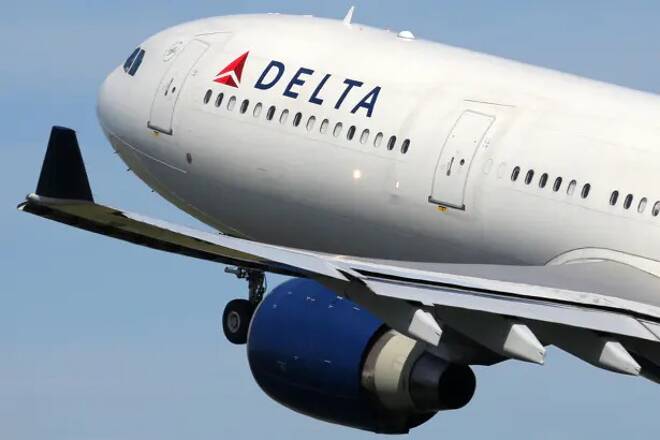Advertisement
Advertisement
Delta Air Lines Shareholders Hit the Exits
By:
Many analysts believe business travel will remain under pressure due to the lower cost of Zoom and other virtual meeting spaces.
Delta Air Lines Inc. (DAL) reports Q2 2021 earnings next week, with analysts expecting the carrier to post a loss of $1.43 per-share on $6.19 billion in revenue. If met, the loss-per-share would mark less than one-third of the red ink posted in the same quarter last year, which included the exit from the first lockdown. The stock dropped more than 10% in the week following April’s Q1 release, fueled by much-worse than expected earnings.
Business Travel Still Weak
The U.S. Transportation Security Administration screened 2,196,411 travelers on Friday July 2nd, higher than the 2,088,760 passing through those gates on the same day in 2019. Even so, Delta and other airlines sold off when they started the new trading week because leisure travelers comprised the vast majority of those bookings rather than business travel, which United Airline Holdings Inc. (UAL) recently reported as 60% lower than pre-pandemic levels.
Airlines are highly dependent on business travel and are waiting patiently for their return. However, many analysts believe this segment will remain depressed for several years due to the lower cost of Zoom and other virtual meeting spaces. Not everyone agrees with this somber analysis, as evidenced by a recent industry-wide Wolfe Research upgrade, who is forecasting additional upside driven by a late summer business travel surge.
Wall Street and Technical Outlook
Wall Street consensus has grown more bullish in the last three months, posting an ‘Overweight’ rating based upon 12 ‘Buy’, 1 ‘Overweight’, and 9 ‘Hold’ recommendations. No analysts are recommending that shareholders close positions. Price targets currently range from a low of $44 to a Street-high $73 while the stock is set to open Wednesday’s session on top of the low target. This humble placement suggests high levels of skepticism about Delta’s long-term outlook.
Delta topped out above 60 in January 2018 and failed four breakout attempts into 2020. It fell to a 7-year low during the pandemic decline and bounced in a rising channel that lost steam after mounting the 200-day moving average and reaching the .786 Fibonacci selloff retracement level in March 2021. The pullback into July has bounced along a trading floor at 43 while accumulation has dropped to a 9-month low. Sellers could easily take control in this bearish scenario, filling the Nov. 6 gap between 32 and 35.
For a look at all of today’s economic events, check out our economic calendar.
Disclosure: the author held no positions in aforementioned securities at the time of publication.
About the Author
Alan Farleyauthor
Alan Farley is the best-selling author of ‘The Master Swing Trader’ and market professional since the 1990s, with expertise in balance sheets, technical analysis, price action (tape reading), and broker performance.
Advertisement
